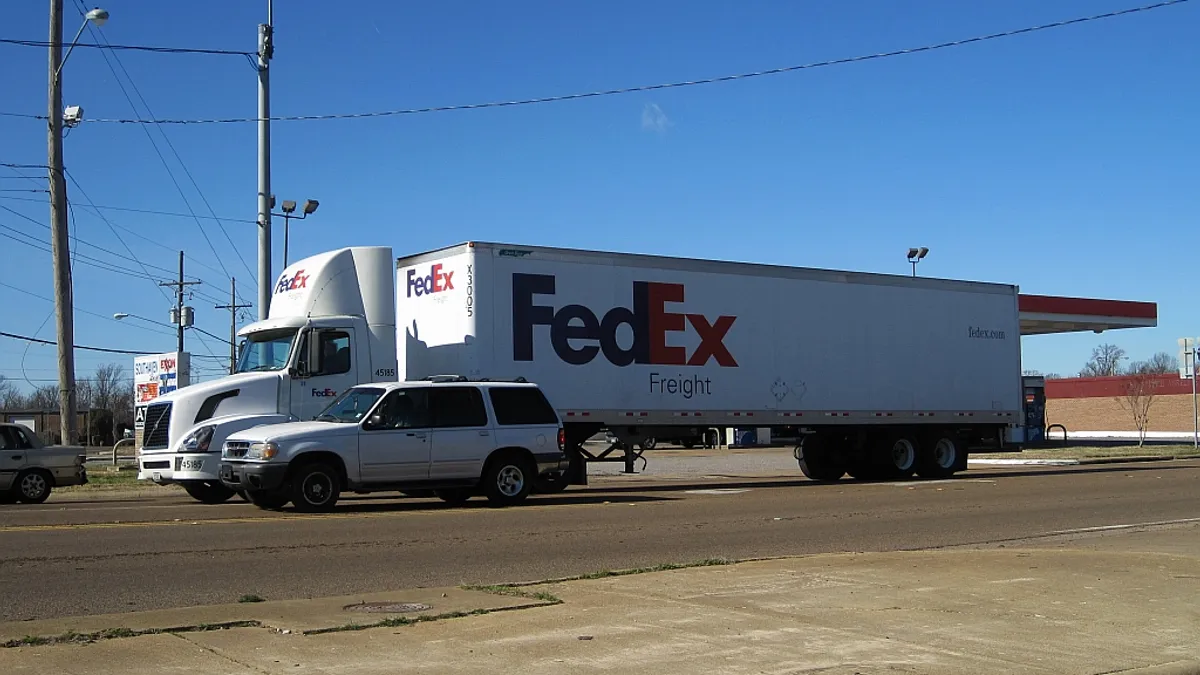Dive Brief:
- FedEx Freight chief Michael Ducker believes regulation and social acceptance, not technology, will be the largest obstacles to the development of self-driving trucks, the Financial Times reported Monday.
- The technology for fully-autonomous vehicles is developing rapidly, but a current patchwork approach to regulations limits testing in specific states. The U.S. Department of Transportation is set to issue further official guidelines for self-driving trucks this year.
- However, others oppose rigid federal regulations, worrying it may set too early a standard and limit innovation. Having to follow specific guidelines could discourage trying new approaches altogether, according to the report.
Dive Insight:
The debate over regulation and innovation is hardly new, but is not necessarily black and white, recent examples show.
The patchwork approach to regulation has allowed self-driving testing hubs to develop around the U.S., with Ohio, Michigan, Iowa, California, Nevada and Arizona among some of the states seeing limited tests of the vehicles. Similarly, some states are monitoring the technology's development closely, allowing for public scrutiny of the technology before its full development. In a way, this has allowed companies to innovate carefully, as a safety blunder (like Tesla's) could lead to future market setbacks.
However, the trucking industry typically prefers a national approach given its cross-border nature. Platoons, for example, are arguably most useful in the long-haul market, which often traverses various states, but what use is the technology in Ohio and Iowa if either Indiana or Illinois ban it on I-70?
In addition, both public and business perception of the technology remains divided: some transportation providers draw the line at fully-autonomous vehicles, and drivers in New York, for example, favor bans on the technology altogether.
With such opposing views on the books, how likely is the DOT to rule effectively on the matter? Challenges will abound regardless of federal opinion, which could potentially slow the planned 2020 adoption of the technology. Countless other issues exist, such as cargo management, first and last mile coverage, or unique conditions like weather changes and closed roads.
Given the strong debate, the DOT may again choose a hybrid approach to its proposed rulemaking. When the DOT issued its first guidelines for "highly-automated vehicles," including heavy vehicles like trucks, it passed the buck for specific regulations on to space, opting instead to offer a sort of checklist on safety requirements. Patchwork regulation may be okay, but all self-driving vehicles must be equally safe, per the September guidelines.
Only time will tell whether specific trucking guidelines, or the next update, will a different approach. At the moment, observers can at minimum look forward to further testing of platoons.












